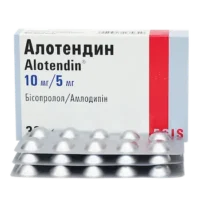Description
Torsid (Torasemide) Tablets 10 mg. №90
Ingredients
- Active ingredient: Torasemide 10 mg per tablet.
Dosage
- Recommended dosage: The usual starting dose is 5-10 mg once daily, which can be adjusted according to the individual’s response.
Indications
- Indicated for: Torsid is used to treat edema associated with congestive heart failure, renal disease, or hepatic disease.
Contraindications
- Do not use Torsid if:
- – You are allergic to torasemide or any other ingredients in the product.
- – You have anuria (no urine output).
- – You have hepatic coma or precoma.
Directions
- How to take: Take Torsid exactly as prescribed. Swallow the tablet whole with a glass of water.
Scientific Evidence
Studies have shown that torasemide, the active ingredient in Torsid, is effective in managing edema associated with various conditions. Torasemide inhibits the reabsorption of sodium and chloride in the kidneys, increasing urine production and reducing fluid retention.
Additional Information
-
Torsid is a potent diuretic that reduces excess fluid, relieving edema symptoms and improving cardiovascular function. Regular electrolyte monitoring is important to prevent imbalances.
-
Clinical trials have demonstrated torasemide’s efficacy in improving symptoms and outcomes in heart failure and renal dysfunction patients. The drug is well-tolerated with a favorable safety profile.





